Results 5,871 to 5,880 of 12094
Thread: Anandtech News
-
03-30-16, 02:00 PM #5871
Anandtech: Acer Unveils New Chromebook 14 with Up to 14-Hour Battery Life
Acer this week introduced its new family of Chromebooks that wed performance with portability. The new laptops feature multi-core x86 microprocessors, 14” displays as well as aluminum chassis. Even in its most advanced configuration, the Chromebook 14 costs only $299. Acer traditionally positions its Chromebooks as solutions for students as well as customers on a budget, who need basic computing and do not want to invest a lot.
Several years ago, personal computers running Google’s Chrome operating system were considered as cheap alternatives to Windows-based PCs, which is why they used affordable components and could not boast solid performance, despite the lightweight OS. Eventually, such PCs became relatively popular and manufacturers started to use more advanced ingredients, such as IPS displays or microprocessors with higher performance. Google itself introduced its Chromebook Pixel laptop in 2013 (and updated it in 2015), targeting premium buyers. The Chromebook Pixel is one the most advanced and powerful Chromebooks ever made thanks to its Core i7 “Broadwell” processor, a display with 3:2 aspect ratio as well as an aluminum body. Google’s Pixel demonstrated to other PC makers that it is possible to build premium Chrome OS-based notebooks and they followed with more advanced Chromebooks. The new Acer Chromebook 14 is not as powerful as the Pixel, but it is clearly a step into its direction with a high-resolution display as well as an all-aluminum chassis.
The Acer Chromebook 14 (CB3-431) features, as the name suggests, a 14” IPS display with 1920×1080 or 1366×768 resolution as well as 170-degree viewing angles and an anti-glare coating. Unlike the Chromebook Pixel, Acer’s new laptops have 16:9 aspect ratio with all of its advantages for video viewing and disadvantages for Internet surfing. The model with higher resolution can work on one battery charge for 12 hours, whereas the Chromebook 14 with 1366×768 resolution boasts with up to 14-hour battery life on a single charge.
The Chromebook 14 laptops are based on Intel Celeron “Braswell” processors with two (Celeron N3060) or four (Celeron N3160/N3150) cores featuring the Airmont micro-architecture and up to 1.60 GHz clock-rate, Intel’s Intel Gen 9 graphics core with 12 execution units as well as up to 6 W TDP. Unlike Google’s Chromebook Pixel as well as Acer’s Chromebook 15, the Chromebook 14 cannot integrate a high-performance CPU featuring Broadwell micro-architecture, but that was certainly a trade-off between the price and portability.
Acer equips its Chromebook 14 laptops with 2 GB or 4 GB of LPDDR3 RAM (which is a good news for battery life), 16 GB or 32 GB of eMMC solid-state storage as well as a dual-band 2x2 MIMO 802.11ac Wi-Fi module with Bluetooth 4.2. The systems also feature a 720p webcam, a 3.5-mm mini jack, a microphone, stereo speakers, two USB 3.0 ports as well as an HDMI output.Acer Chromebook 14 Specifications Acer Chromebook 14 full HD Acer Chromebook 14 HD Screen Resolution 1366×768 1920×1080 CPU Dual-core Intel Celeron N3060 or Quad-core Intel Celeron N3150/3160 Graphics Intel HD Graphics 400/405 (Gen 8, 12 execution units) RAM 2 GB or 4 GB LPDDR3 Storage 16 GB or 32 GB of eMMC storage Wi-Fi 2x2 MIMO 802.11ac Wi-Fi module Bluetooth Bluetooth 4.2 USB 2 USB 3.0 ports HDMI One HDMI output Other I/O Microphone, stereo speakers, audio jack Thickness 17 mm / 0.66" Weight 1.55 kilograms / 3.42 pounds Price $299 for the launch model
The Chromebook 14 from Acer is 17 mm thick and weighs 1.55 kilograms, which is in line with many portable laptops. Acer claims that its fanless cooling system is enough to cool-down Intel’s Celeron CPU with a 6 W TDP, which is why the Chromebook 14 has no fans at all.
Acer did not say much about the price of its Chromebook 14. The launch model will be available next month with a Full HD display, 32 GB storage and 4 GB RAM starting at $299.99 in the U.S. and $399.99 (CAD) in Canada. Other Chromebook 14 models will sport lower amount of storage and RAM as well as a lower-resolution screen, but also a longer battery life. Their prices are unknown, but will clearly be different in different countries.
Gallery: Acer Unveils New Chromebook 14 with Up to 14-Hour Battery Life





More...
-
03-30-16, 02:36 PM #5872
Anandtech: Microsoft Announces Windows 10 Anniversary Edition
Windows 10 is unlike previous versions of Windows in that the original intent was to have it constantly updated over its lifetime. We’ve already had one big update with the November update, back in, you guessed it, November. The second update is code named Redstone, and all of the latest insider builds have features the RS in the naming scheme. Today at Build, Microsoft announced they will be calling this update the Windows 10 Anniversary Edition, and it will be available this summer.
Someone much more philosophical than myself once said “A rose by any other name would smell as sweet” and I’m sure that applies here as well. With this choice in naming schemes I don’t really know where they go on the next update, but regardless the product is going to be known as Windows 10 anyway, so maybe this doesn’t matter.
We’ve known about a few of the big updates coming to Windows 10, with things like Extension support in Microsoft Edge, but today Microsoft announced a few other important pieces as well coming later in the summer.
The first was better inking support. Microsoft has worked hard to ensure that inking and pen usage in Windows is as first-class as keyboard and mouse, and with this update inking will get even more powerful. There will now be an inking hub which can be opened by clicking the pen, and this hub will surface apps that support inking, as well as frequently used apps that you use with the pen.
They also showed off how writing in a sticky note can be used by Cortana to add appointments to your calendar, among other things. For instance, if you write in a note that you are meeting with Fred at 3pm tomorrow, Cortana will be able to action that information to set up the appointment for you.
One other inking improvement, which is a big one, is the introduction of a software ruler. Now, this may not sound that important, but if you’ve ever tried to draw with a ruler on a Surface, you would know it’s not as natural as doing the same thing on paper. With the new software ruler, you will be able to move it around using touch, and then you can draw and the pen line will stick to the ruler. A more impressive version of this was demoed using Adobe Illustrator, where an artist can use a French Curve which is software based to accurately use it just like as if it was a physical version of the same thing. This should help inking quite a bit.
Another new feature coming with the update is Biometric support for Microsoft Edge. Using extensions added to the W3C, Edge will be able to log you into websites with any of the Windows Hello supported biometric logon methods. The demo on screen was using a fingerprint to log in. I need to ask them a few questions about this and see if it’s just a rebrand of the Passport idea already, or if this is a new thing, but since it’s based on standards in the W3C in theory other browsers could add this as well. The big downside is that sites would have to offer this support, and there’s no way to know whether may will.
The last big announcement for this next Windows update is new experiences with Cortana. Cortana will now be available right on the lock screen, so you won’t need to login in order to set up new appointments or launch tasks. Cortana is also getting a lot more capabilities through extensibility, meaning Cortana will be able to take care of complete tasks for you. Demonstrated on stage was the ability for Cortana to book a hotel room for you based on an upcoming calendar appointment in another city.
Cortana is also getting its own bot. Bots are small programs that can do tasks for you. In the case of Cortana, it will be able to talk to other bots to complete tasks. In the previous example, Cortana can talk to the hotel’s bot in order to set up the room booking without needing much, if any, information from you. Bots were a bit part of the keynote, and Microsoft is announcing the Microsoft Bot Framework in order to let devs quickly and easily build powerful bots which leverage big data services in Azure, and ones that are able to do natural language interaction with people.
Compared to last year, the news was a lot more tame on the Windows side, and that’s not surprising really since last year was the lead up to Windows 10’s launch, but at the same time there is plenty of things they are adding to make the experience better. There are still two more days left in Build, and I hope to get some Windows questions answered over the next couple of days.
More...
-
03-30-16, 02:36 PM #5873
Anandtech: Foxconn Takes Control of Sharp
Foxconn Technology Group, the world’s largest contract maker of consumer electronics, announced on on Wednesday that they have officially acquired Sharp, a major maker of LCD panels and various electronics from Japan. The two companies have collaborated for many years and Foxconn took over Sharp’s television factories in Mexico, China and Malaysia as well as a stake in the company in 2012. This week Foxconn gained full control of Sharp.
Foxconn (which is also known as Hon Hai Precision Industry) plans to pay ¥389 billion ($3.5 billion) for a 66% stake of Sharp, which is ¥100 billion less than was originally negotiated a month ago. That deal in February fell apart because Foxconn learnt about substantial financial liabilities that Sharp had. In the future, Foxconn will have to pay ¥100 billion ($889 million) more to get preferred stock from Sharp’s main banks and then pay liabilities that Sharp has, reports Bloomberg news-agency. Sharp has to pay Mizuho Financial Group and Mitsubishi UFJ Financial Group approximately ¥510 billion (4.53 billion) in the coming months. Besides, Sharp expects to report an operating loss of ¥170 billion ($1.511 billion) for the fiscal year, which ends on Thursday. In short, Foxconn’s total spending on Sharp will be significantly higher than $3.5 billion, but the prize that the contract manufacturer gets may be worth it.
Terry Guo, the founder and chairman of Foxconn, hopes that the acquisition of Sharp will get his company a number of significant assets: a well-known consumer electronics brand with a good product lineup, LCD display production capacities and intellectual property.
“I am thrilled by the prospects for this strategic alliance and I look forward to working with everyone at Sharp,” said Terry Gou. “We have much that we want to achieve and I am confident that we will unlock Sharp’s true potential and together reach great heights.”
The buyout of Sharp will transform Foxconn into a major producer of display panels. As a result, it will be able to offer more products and services to its customers, including Apple. Right now Apple fetches LCD panels for its iPhones and iPads from companies like Japan Display Inc. (JDI), LG Display and Samsung Display. If Foxconn manages to offer the right technology at the right price to Apple, then it may get itself a new multi-billion dollar business. In fact, even if for some reason the current deal between Foxconn and Sharp fells apart before October 5, the Taiwan-based company will be given an opportunity to buy only the display business from Sharp. However, to capitalize on the display business in the long term, Foxconn will have to ensure that Sharp is able to produce OLED panels in addition to LCDs since the former are getting more popular.
While contract production of electronics is what made Foxconn big and strong, the competition against companies like Flextronics, Pegatron, Quanta and others is intense. Profit margins of Foxconn has shrunk in the recent years and in a bid to cut-down its costs the company had to start using robots in its factories. Automatization of manufacturing helped Foxconn to increase its profits last year, but selling own-brand goods is generally significantly more profitable than producing hardware for others. But branded products will be a new business for Foxconn. Thanks to its volume of scale, abilities to fetch components in high volume and at favorable prices, the company may significantly reduce costs of Sharp’s electronics, which will help to increase their market share. In the recent years, Foxconn also entered the markets of system-on-chips and software (by acquiring Socle and collaborating with software makers like Mozilla), which further adds to its product building expertise. At the same time, production of branded devices may make Foxconn a competitor to at least some of its clients. For example, Sharp’s smartphones compete fiercely against Apple’s iPhone in Japan and still control a sizeable chunk of the market.
Sharp’s intellectual property is particularly important to build next-generation displays and therefore Foxconn is interested in getting it. In addition, Sharp probably has a lot of patents in the field of consumer electronics, communications and software, which will come in handy when Foxconn starts to produce its own devices or develop products for others (as an ODM).

Sharp was founded in 1912 in Tokyo, Japan, by Tokuji Hayakawa. The company got its name after the ever-sharp mechanical pencil, which was invented by Mr. by Hayakawa. Sharp made the world’s first LCD calculator in 1973 and the world’s first phone with camera in 2000. Most recently Sharp began to sell the world’s first commercial UHD TV with 8K resolution (7320×4680) and was among the major driving forces behind this new tech. Unfortunately, strong yen, competition against South Korea-based CE makers and other factors significantly affected Sharp’s abilities to capitalize on its leading-edge technologies in the recent years. With Foxconn’s money and expertize in mass production, Sharp may become a much more significant maker of CE than it is today.
“If you are talking about two years, it will be difficult. Three years, there is potential. Five years, then definitely,” said Kylie Huang, analyst with Daiwa-Cathay Capital Markets, reports Reuters news-agency.
Financial analysts generally praised the deal, but admitted that Foxconn will have to invest in Sharp going forward in a bid to unlock the potential of the consumer electronics company.
“This is positive for Sharp, although it’s hard to imagine that Foxconn won’t have to keep providing funds,” said Hideki Yasuda, an analyst at Ace Research Institute.
Images by Apple, Bloomberg, Foxconn.
More...
-
03-30-16, 03:39 PM #5874
Anandtech: Windows 10 Gaming Updates: DirectX 12 and Xbox One
With the Windows Anniversary Edition, Microsoft has detailed some upcoming improvements for gaming. They even brought Phil Spencer out to announce the upcoming plans for gaming on Windows. The emphasis they are putting on gaming in the last while is quite a change, and gaming on both Xbox and PC is a much bigger focus for Microsoft than in the recent history. That’s not a big surprise, since the gaming industry is one of the few bright spots in the PC market, and with the recent release of Virtual Reality, there’s a big opportunity here for all parties to improve and update the hardware and software.
Right off the bat, Phil Spencer, head of the Xbox team, announced that the Universal Windows Platform would be a better platform for game developers, as well as users. On the user side, system security should be a lot more robust thanks to the sandboxed application platform used on UWP, and apps can be easily installed through the store, and removed without much fuss. Phil also announced that the UWP will be updated in May to bring the ability for end users to disable V-Sync, and it will support G-SYNC and FreeSync monitors as well. Right now, this is likely one of the biggest issues with UWP for gaming on true gaming titles like Rise of the Tomb Raider, and Microsoft has caught a lot of flack over this issue since the game launched, and it’s a basic setting that PC gamers are used to being able to adjust so this is good news. In addition, they will support multi-GPU solutions later on, possibly with the summer update to Windows.
If they want to be a serious platform for gaming, I think these are good steps, but there is plenty they can do to mimic the other platforms. With the massive install size of games, they need to be able to let people specify where the games are stored. You can work around this now, but it is clunky. They also need the ability to backup and restore games. It’s great I can uninstall Rise of the Tomb Raider quickly, but if I do want it back I have to download the entire 50 GB again. But still, even this one change is a good step, but it’s really the first step.
The big announcement for Xbox One is that it will finally get access to the Windows Store coming with the Windows 10 Anniversary Update. That means by the summer, people will be able to install UWP apps onto the Xbox One, enabling a whole host of new possibilities. Apps like Netflix would then be able to share a common app with Windows 10, and companies like MLB will be able to share the Xbox One app with Windows 10. But all developers will be able to target the Xbox which will enable things I’ve never thought of.
In order for developers to target Xbox and actually debug and test their applications on the big screen, the Xbox One is gaining a developer mode, allowing anyone to use their Xbox One as a dev kit. Microsoft demoed this, and first an app has to be installed to enable this, and register the Xbox as a dev kit. You can then use Visual Studio to do a remote session on the Xbox by supplying its IP address, and the app will compile and run remotely.
Xbox will also be gaining some other new features with the update, including the ability to use Cortana for voice recognition. Right now the Xbox supports basic commands over voice, such as Xbox Pause, but Cortana should enable a much broader interaction with natural language. Just like on Windows, you would be able to ask Cortana to watch Fuller House on Netflix, rather than the step by step process required now.
In addition, the native controls for UWP apps will support controller input, just like they already support keyboard, mouse, touch, and pen, so no extra work will be required by the dev to enable this interaction.
Microsoft said they will have more to announce at E3.
More...
-
03-31-16, 07:15 AM #5875
Anandtech: LaCie Porsche Design Mobile Type-C External HDD Capsule Review
Seagate launched a host of direct-attached storage products under the LaCie brand name at CES earlier this year. Though the LaCie Chrome USB 3.1 Gen 2 Type-C external SSD was easily the most impressive announcement of the lot, it is the LaCie Porsche Design Mobile which is making it to the market first. The unit started shipping last week. Once the review unit reached our hands, it was easy to see why. It turns out that the internal drive is the Seagate / Samsung Momentus ST4000LM016, the same as the one we saw in the Seagate Backup Plus Portable last year. This 2.5" drive has a 15mm thickness, making it suitable for use in bus-powered external drive enclosures.
Important aspects of the drive include:
- 16 MB buffer
- 5400 RPM spindle speed
- SATA III 6 Gbps interface
It appears that the ST4000LM0016 uses five platters with a 800GB/platter design to achieve the capacity point. The USB 3.0 bridge chip also supports UASP and S.M.A.R.T passthrough. The LaCie Porsche Design Mobile 4TB version has dimensions of 128 mm x 84 mm x 21 mm and weighs 315 grams. It comes with a quick start guide, as well as a USB 3.1 Gen 2 Type-C to Type-C cable (rated for SuperSpeed USB 10 Gbps) and a Type-C to Type-A cable.
Compared to the Seagate Backup Plus Portable, the Porsche Design Mobile P9227 external hard drive brings the following updates:
- Stylish industrial design for the aluminum enclosure gives it a premium look and feel (tying in closely with the LaCie branding message)
- Redesigned setup process for the average consumer base to be able to use the drive with both Mac and Windows systems.
- Changes in bundled features and software
- Replacement of the micro-B USB 3.0 port with a Type-C USB 3.1 Gen 1 port capable to delivering up to 5 Gbps of throughput
The industrial design of the unit is in line with what we have come to expect from LaCie's product lines designed by Porsche Design. The enclosure is fully aluminum and the contours are quite pleasing. The product presents a premium look and targets LaCie's traditional consumer market quite nicely. Thanks to the bundled Type-C to Type-A cable, the product is compatible with both traditional USB Type-A and the new Type-C ports.
Setup Impressions
The product's setup process is optimized for consumers who are not particularly tech-savvy, and don't want to be bothered with partition tables and other such things. Upon connecting to a computer, a 260MB FAT32 partition with the LaCie setup program gets mounted.
The Windows setup program allows the end-user to configure multiple partitions, if necessary, for use with multiple operating systems (FAT32 for Windows, Mac and Linux, and NTFS for Windows). The bundled software suite includes Genie Timeline Free (a backup software for Windows) and LaCie's Desktop Manager (a configuration / management software for LaCie devices in the local network). The gallery below presents some of the other options in the setup process.
Gallery: LaCie Porsche Design Mobile Type-C External HDD Setup Process





DAS Benchmarks
The LaCie Porsche Design Mobile P9227 4TB drive was formatted in NTFS for our benchmarking process. In order to evaluate the DAS aspect of the unit, we utilized the testbed outlined in the table below to test the performance. One of the USB 3.1 ports enabled by the Intel Alpine Ridge controller was used to connect the unit to the system.
Our testing methodology for DAS units takes into consideration the usual use-case for such devices. The most common usage scenario is transfer of large amounts of photos and videos to and from the unit. The minor usage scenario is importing files directly off the DAS into a multimedia editing program such as Adobe Photoshop. Prior to taking a look at the real-life benchmarks, we first check what ATTO and CrystalDiskMark have to report for the LaCie Porsche Design Mobile P9227.AnandTech DAS Testbed Configuration Motherboard GIGABYTE Z170X-UD5 TH ATX CPU Intel Core i5-6600K Memory G.Skill Ripjaws 4 F4-2133C15-8GRR
32 GB ( 4x 8GB)
DDR4-2133 @ 15-15-15-35OS Drive Samsung SM951 MZVPV256 NVMe 256 GB SATA Devices Corsair Neutron XT SSD 480 GB
Intel SSD 730 Series 480 GBAdd-on Card None Chassis Cooler Master HAF XB EVO PSU Cooler Master V750 750 W OS Windows 10 Pro x64 Thanks to Cooler Master, GIGABYTE, G.Skill and Intel for the build components
In order to tackle the first real-life use-case, we created three test folders with the following characteristics:
- Photos: 15.6 GB collection of 4320 photos (RAW as well as JPEGs) in 61 sub-folders
- Videos: 16.1 GB collection of 244 videos (MP4 as well as MOVs) in 6 sub-folders
- BR: 10.7 GB Blu-ray folder structure of the IDT Benchmark Blu-ray (the same that we use in our robocopy tests for NAS systems)
The above benchmark run was also instrumented to record the drive temperature as well as instantaneous transfer rates during the process. The internal disk temperature was only slightly more than 40 C even after more than 127 GB of writes and 127 GB of reads continuously.LaCie Porsche Design Mobile P9227 4TB robocopy Benchmarks (MBps) Write Bandwidth Read Bandwidth Photos 99.12 78.38 Videos 92.65 93.93 Blu-ray Folder 98.29 90.79
For the second use-case, we take advantage of PC Mark 8's storage bench. The storage workload involves games as well as multimedia editing applications. The command line version allows us to cherry-pick storage traces to run on a target drive. We chose the following traces.
- Adobe Photoshop (Light)
- Adobe Photoshop (Heavy)
- Adobe After Effects
- Adobe Illustrator
Usually, PC Mark 8 reports time to complete the trace, but the detailed log report has the read and write bandwidth figures which we present in our performance graphs. Note that the bandwidth number reported in the results don't involve idle time compression. Results might appear low, but that is part of the workload characteristic. This is not the intended use-case for portable hard drives, but the results are just presented here for the sake of completeness.
Power ConsumptionLaCie Porsche Design Mobile P9227 4TB PCMark8 Storage Benchmarks (MBps) Write Bandwidth Read Bandwidth Adobe Photoshop (Light) 90.81 4.06 Adobe Photoshop (Heavy) 104.15 5.24 Adobe After Effects 70.82 4.14 Adobe Illustrator 86.57 4.10
Evaluation of the power consumption of the drive was done using Plugable's USBC-TKEY. Our test procedure and setup are outlined here.
The drive idled at around 2.12 W, while the peak power consumption was 4.05 W. So, it might be a prudent idea to not operate the drive off a bus-powered hub in case there are other USB peripherals sharing power from the same port.
Concluding Remarks
The LaCie Porsche Design Mobile P9227 external hard drive continues LaCie's tradition of bringing a premium look and feel to top-of-the-line PC and Mac accessories. The industrial design of the unit is definitely praiseworthy. Consumers who value aesthetics and a premium look/feel for their computing accessories might want to give the LaCie Porsche Design Mobile drive a try. In addition, the Type-C interface ensures that the drive can be easily used with Type-C-only devices such as the MacBook. Power delivery is not applicable to the Porsche Design Mobile, since the unit is bus-powered. The externally powered desktop version supports USB-PD, though. The bundled Type-C to Type-A cable ensures that the drive can work equally well with any legacy USB port also.
The LaCie Porsche Design Mobile P9227 4TB is currently available on Apple.com for $230. The other option for consumers looking for a 4TB bus-powered portable drive is the Seagate Backup Plus Portable 4TB version which is currently on sale for $120. In addition to having the same performance for real-life workloads (the drive inside both the units are the same, after all), the Backup Plus Portable also comes with some add-on software features such as Lyve and 200GB of online cloud storage for 2 years. Without doubt, the Backup Plus Portable provides the best value for money. However, LaCie's target market for the Porsche Design Mobile drive is unlikely to give much weight to the value proposition aspect.
Buy Seagate Backup Plus Portable 4TB on Amazon.com
More...
-
03-31-16, 08:34 AM #5876
Anandtech: AMD Announces FirePro S9300 X2: Dual Fiji for HPC
One of the more interesting consequences of GPUs being built on TSMC’s 28nm process for an extended period of time is that it has forced both vendors to compensate and compromise in order to have product lines that cover the nearly 5 year span. Traditional upgrade cycles got thrown out of the window, and instead we saw a number of refreshes and updates, culminating in both AMD and NVIDIA taking their top GPUs right to the 28nm reticle limit of ~600mm2. Such large GPUs have typically been the crossover point between graphics and compute parts, incorporating high-end features such as ECC memory and faster double precision (FP64) compute capabilities. However for the reticle riders, AMD and NVIDIA went another route, building what is arguably the ultimate graphics GPUs with the highest FP32 performance possible.
I mention this because it puts the GPU vendors into the position of doing unconventional things with their GPUs. Nowhere is this more evident than in the new FirePro card AMD is announcing today. The FirePro S9300 X2 is the latest entry into the FirePro S series lineup, and it marks the first (and possibly only) time we’ll see AMD’s Fiji GPU used to power an HPC-grade compute card. The end result is an interesting product that at times will be wickedly powerful for a 300W card, and at other times will have to cope with the abilities and limitations of a GPU that wasn’t designed for the traditional HPC market.
As alluded to by the name, the S9300 X2 is a dual Fiji card, integrating a pair of AMD’s last and most powerful 28nm GPUs. In the interests of delivering a more efficient 300W card, AMD clocks S9300 X2’s GPUs at 850MHz, giving the card a theoretical 13.9 TFLOPs of FP32 compute performance. Meanwhile on the memory side AMD leaves the card’s HBM memory untouched, with each GPU getting 512GB/sec of memory bandwidth, for an aggregate 1TB/sec of bandwidth. Like its graphics counterpart, the Radeon Pro Duo, the S9300 X2 is designed to be the fastest thing available in a single card, at least for the niche where Fiji shines.AMD FirePro S Series Specification Comparison FirePro S9300 X2 FirePro S9170 FirePro S9150 FirePro S9000 Stream Processors 2 x 4096 2816 2816 1792 Boost Clock 850MHz 930MHz 900MHz 900MHz Memory Clock 1Gbps HBM 5Gbps GDDR5 5Gbps GDDR5 5.5Gbps GDDR5 Memory Bus Width 2 x 4096-bit 512-bit 512-bit 384-bit VRAM 2 x 4GB 32GB 16GB 6GB FP32 13.9 TFLOPs 5.2 TFLOPs 5.1 TFLOPs 3.2 TFLOPs FP64 0.8 TFLOPs
(1/16)2.6 TFLOPs
(1/2)2.5 TFLOPs
(1/2)0.8 TFLOPs
(1/4)Transistor Count 2 x 8.9B 6.2B 6.2B 4.31B TDP 300W 275W 235W 225W Cooling Passive Passive Passive Passive Target Market HPC HPC HPC HPC + VDI Manufacturing Process TSMC 28nm TSMC 28nm TSMC 28nm TSMC 28nm Architecture GCN 1.2 GCN 1.1 GCN 1.1 GCN 1.0 GPU Fiji Hawaii Hawaii Tahiti Launch Date Q2 2016 07/2015 08/2014 08/2012 Launch Price $5999 $3999 N/A N/A
Since making its consumer debut nine months ago, I have been pondering whether AMD would attempt to deploy Fiji in a FirePro card. Fiji is arguably built for graphics first and foremost; its FP64 performance is capped at 1/16th FP32 performance, it lacks ECC memory, and its limited to just 4GB of memory per GPU. Given the expectations set by “traditional” HPC cards such as the FirePro S9170 – which offers 4-8x the memory and 3x the FP64 performance – Fiji seemingly can’t stack up. However in building the ultimate graphics GPU, AMD also built the ultimate FP32 compute GPU – one that on paper delivers far more FP32 performance than any other HPC card – and this is where the company will be running with this card.
The end result is that the S9300 X2 is an interesting niche product designed for a certain market segments that need strong FP32 performance above all else – and everything else held equal, don’t use massive data sets. It’s a somewhat narrow niche as a result, but one AMD believes they can do very well in given what kind of FP32 performance S9300 X2 is capable of, especially as NVIDIA doesn’t have an FP32 HPC-focused dual-GPU card of their own.
If you follow the HPC market then the market segments AMD is going after should sound familiar to you. Oil and gas (geosciences) has long been a FP32-centric field – something NVIDIA exploited a few years back as well with the Tesla K10 – and AMD will be chasing after this market with the S9300 X2. AMD will also be trying to push farther into the neural network market, and this is an area where the S9300 X2 may be uniquely suited. Popular GPU neutral network implementations don’t use FP32 math, rather they use even lower precision FP16 math. And though the S9300 X2’s FP16 throughput is merely equal to its FP32 throughput, internally Fiji supports natively storing FP16 data types, which will significantly reduce register pressure on the card, and register pressure is almost always a concern for HPC kernel development.
AMD will also be looking to exploit the products of their Boltzmann Initiative – now formally called the Radeon Open Compute Platform (ROCm) – which will be near or at production quality by the time the S9300 X2 ships. With AMD’s newest card providing the necessary muscle at the hardware level, the company is looking towards ROCm’s heterogeneous compiler to close the gap with NVIDIA on the software side, with the HIPify tools to further bridge that gap by giving developers the means to port their CUDA applications over to AMD’s platform. AMD has already seen some success with ROCm with the geosciences firm CGG, and they’re hoping to continue this trend as the ROCm platform reaches production quality.
Wrapping things up, when it’s released the S9300 X2 will take its place alongside the rest of AMD’s FirePro S series lineup. Continuing to ship alongside it will be the S9100 series cards, which are based on AMD’s Hawaii GPU and compliment the S9300 X2 with traditional HPC-centric features such as ECC memory and high performance FP64. The FirePro S9300 X2 will be shipping this quarter with an MSRP of $5999.
Gallery: AMD FirePro S9300 X2 Press Deck





More...
-
03-31-16, 11:24 AM #5877
Anandtech: Microsoft Announces Xamarin Will Be Included Free With Visual Studio, And
Back in February, Microsoft announced it was acquiring Xamarin, the cross-platform toolkit which allows developers to write native apps for iOS, Android, Windows, and Mac, using Visual Studio and C# code. Today during the Build day 2 keynote, Scott Guthrie announced Xamarin will now be included for free with all editions of Visual Studio, and Xamarin will join the rest of .NET in being made open source.
Previously Xamarin was an expensive set of tools, and while powerful, the cost was prohibitive to a lot of developers. By moving the Xamarin tools right into Visual Studio at no cost, Microsoft is making a play to have Visual Studio be a much better platform for coding on all platforms.
Xamarin outputs native apps for the supported platrforms, and as part of the demo, Microsoft showed off a new feature of Visual Studio which is a remote simulator for iOS. Since they can’t emulate iOS directly on Windows like they can with Android, this at least allows you to debug and run apps in real-time without having to switch computers.
More...
-
03-31-16, 11:24 AM #5878
Anandtech: Hololens Round Two: Augmented Reality At Build 2016
Last year at Build I got my first chance to try Hololens. That experience was very interesting, not only because of the potential of Augmented Reality, but the entire circus surrounding the device. The Hololens sessions were at a different location, and the groups brought over had to lock up everything electronic. We could only do photos of a unit in a display case. Naturally when Microsoft announced yesterday that Hololens would start shipping to developers yesterday, this year’s experience could never be so secret.
So when we got to the demo location, and were given keys for a locker, I was a bit taken aback. But it wasn’t anything as sinister this time, only a way to make sure there were no backpacks on the floor as tripping hazards, because this year’s untethered experience was really untethered.
That comes a bit later though. This year’s demo involved building and deploying an 3D app using Unity and Visual Studio, and each person doing the demo also got a coach to help solve any issues on the way. The Hololens unit was slightly different this year, but looking at it, it was remarkably similar to last year’s demo version. The one big change this year was very welcome. Instead of having a person physically measure the inter-pupillary distance on your head (the distance between your pupils), the experience is now handled through software when you first put the headset on. There is a quick calibration that you can run and it sets your eye position based on some air tap gestures. It was very quick and easy, and the set walks you through everything required with voice and visual cues.
Then we sat down building our apps. Since this was a demo for press, all of the coding was done ahead of time and we just had to walk through adding scripts in Unity to set up the demo. Then we build them, and deploy to a remote machine using the IP address of the Hololens.
The demo app was of an energy ball which, when locked to a location in space, would open up and show some nifty effects. The experience was very basic compared to what I would expect of the retail apps, but this was a simple demo and it worked well.
The very interesting bit was later on, when we linked our Hololens units with the other people in our pods of six people. This way all six people could interact with a single energy ball. People also got to choose an avatar which would float over their heads.
That experience was pretty amazing. With very little setup, the holograms were truly linked to a single point that all people could see. As part of this demo, my coach suggested I walk around the (very large) room and then look back. This was probably the most amazing part of the demo. After walking a hundred feet or more away, and around some tables and pillars, I looked back and the hologram was still floating exactly where I left it. The ability to really lock things to a location is really the one part that needs to be perfect for this experience to work, and they really nailed it. In addition, my pod mates were all around the room with avatars floating over their heads.
So with a night to think about it, here are my thoughts after using the Hololens a year later. The field of view issue is still very small, and clearly not something they were not able to address before they shipped to developers. I would explain it as something like a mid-sized television, in the 27-inch range, sitting a few feet away from you. My experience was better this time because there were less software issues, but the small field of view can certainly take some getting used to.
The hardware itself was very easy to put on and adjust, and it was fairly well balanced in that I never felt like the unit was heavier on the front where the lenses are. The adjustment is done with a wheel on the back, much like a welding helmet if you’ve ever seen one of those. The right side has buttons for volume, and the left side has buttons for brightness. I had to crank up the audio quite a bit because of the loud room we were in, and although the audio was spatial, it was hard to get a sense of that with the commotion going on during the demos. Although I don’t wear glasses, it looked like there would be no issues wearing glasses with it, and several of the other attendees seemed to have no issues putting the device on and using it with them.
The experience of AR is much different than VR. Because you are interacting with things in real space, you can easily move around without fear of tripping or walking into a wall. VR is able to offer much more powerful graphics and immersion right now, but you are largely bound to a single location. The use cases for AR seem, to me, to be not necessarily the same as VR and both should easily be able to co-exist.
While doing my demo, I asked my coach how to close the app we were running, and he showed me a “bloom” gesture which closes it. Once I did that, I was in another mode for the Hololens where I could see how it mapped out the physical world with polygons by tapping my finger in a direction. This was amazing and the Hololens did a great job on picking up everything in my area, including the people, with no issues.
I then did another bloom and was back at the start screen. On the demo units, this was pretty sparse, but I was able to go into settings and play around. I didn’t see anything special in there other than the process of interacting with the menus was very simple and was very easy to get used to. From a UI aspect, the Hololens did very well.
At the end of our demo we did some shooting of orbs which opened up a hole in the floor. Peering down into it, it really felt like this was something you didn’t want to step into. The holograms tend to be a bit translucent, but on this one in particular it was much more solid. There’s a lot of untapped potential here and I hope to get a chance to do some of the other demos they have here to get a better feel for that. The headset itself seemed to be near the edges of its processing power on the final demo though, which had a lot of not very complex polygons moving around, and the six people interacting. There was a lot of things to keep track of, as well as quite a few holograms flying around.
Microft then said that all of the code that we used in the demo, and all of the code used on the demos last year, is all available on GitHub to allow devs quicker access to code.
I think the Hololens is still one of the most interesting pieces of tech I’ve used in a long time. There is a lot of potential here for education, training, and even tasks like painting your house and trying different color samples. There are quite a few applications where this would work very well.
The hardware though still needs a bit of work. It is a bit bulky, and the lenses would not stay anchored to the spot in front of me where I set them, so I had to readjust. The field of view is also not very large, and this could be because the processing power is not as powerful as the tethered experiences of VR.
I look forward to seeing where this goes in the future. A lot of the pieces are already well done and on the software side, the experience is very good. With a bit better hardware, which will almost certainly come with time, this is going to be a very powerful tool from Microsoft.
More...
-
03-31-16, 12:04 PM #5879
Anandtech: The Intel Xeon E5 v4 Review: Testing Broadwell-EP With Demanding Server Wo
Fifteen months after first reaching consumers, Broadwell has finally arrived in the server space with Broadwell-EP. Premiering with the Xeon E5 v4 family, Intel is now offering server processors with up to a staggering 22 cores. Of course, there is much more to discuss than just a higher core count in the Xeon world. Join us as we introduce you to the a new killer enterprise application, brand new real world benchmarks on top of the latter, and our usual benchmarks on no less than five different generations of Xeons!
More...
-
03-31-16, 02:48 PM #5880
Anandtech: EVGA Rolls Out SC17: High-End Gaming Laptop Designed for Overclocking
EVGA this week officially introduced its SC17 laptop designed for demanding gamers, which combines rather high performance with UHD display. The system features an Intel Core i7 microprocessor with unlocked multiplier, a high-end NVIDIA GeForce GTX graphics adapter, a combination of fast and capacious storage devices as well as a 4K display Two key features of the system are its ability to fine-tune microprocessor’s voltages in a bid to maximize overclocking potential as well as GPU overclocking support.
The EVGA SC17 laptop was designed by the company’s engineers completely in-house in a bid to offer functionality not available on other high-end notebooks. While EVGA is primarily known for its video cards and motherboards, keep in mind that that the company hired engineering team from Epox, a legendary maker of mainboards for enthusiasts, sometimes in mid-2000s (in fact, Andrew Han, a co-founder of EVGA, was also a co-founder of Epox), and thus has a lot of experienced talent when it comes to platform development. As a result, the EVGA SC17 sports a fully-fledged UEFI BIOS, which gives users control over many aspects of system’s performance, including CPU voltages, memory timings and so on. In fact, even the GPU can be overclocked from the BIOS, which is not a feature that you can typically find on notebooks. For those, who want to get maximum out of their systems, there is even a “clear CMOS” button on the chassis in order to reset settings in case of a malfunction. For users, who do not want to hevaily tweak their PC, the SC17 supports EVGA Express OC (EOC) technology that lets to easily overclock the system to gain performance, or downclock it to prolong battery life, with a press of two button.
EVGA’s new gaming laptop is based on the Intel Core i7-6820HK processor (four cores with Hyper-Threading, 2.70 GHz/3.60 GHz frequency, 8 MB L3 cache, HD Graphics 530, 45 W TDP) with unlocked multiplier, which was designed with overclocking in mind. The SC17 notebook is also equipped with NVIDIA’s GeForce GTX 980M graphics processing unit with 8 GB of GDDR5 memory, 32 GB of G.Skill’s DDR4-2666 memory, a 256 GB M.2 SSD with NVMe protocol (PCIe 3.0 x4 interface) as well as a 1 TB hard drive with 7200 RPM spindle speed. Just like other high-end laptops, the EVGA SC17 sports a full-HD webcam, built-in speakers with subwoofer, a Gigabit Ethernet controller, a IEEE 802.11ac Wi-Fi + Bluetooth 4.2 module, one USB 3.1 type-C port, two USB 3.0 ports, mDP as well as HDMI display outputs and so on.
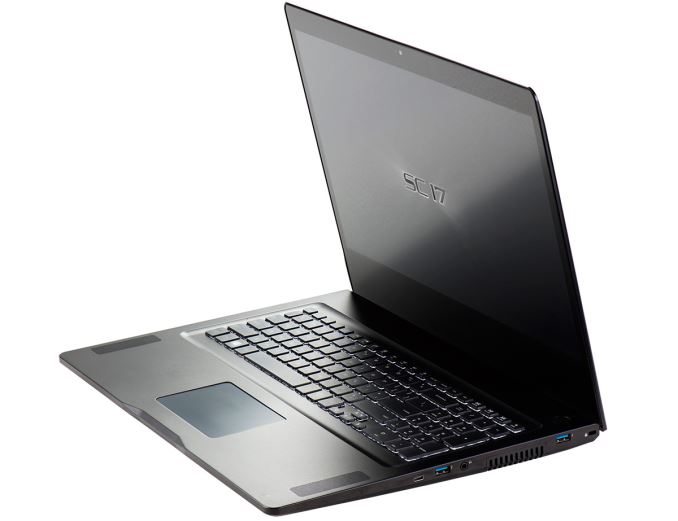
EVGA’s engineers remained loyal to their overclocking origin and incorporated a rather advanced cooling system with two fans and eight vents into the SC17. The cooling system is designed to ensure that the Core i7-6820K and the GeForce GTX 980M receive enough cool air even when they are overclocked. It should be noted that NVIDIA is not particularly enthusiastic about mobile GPU overclocking these days, meaning EVGA would have had to do some extra work to offer this for customers.
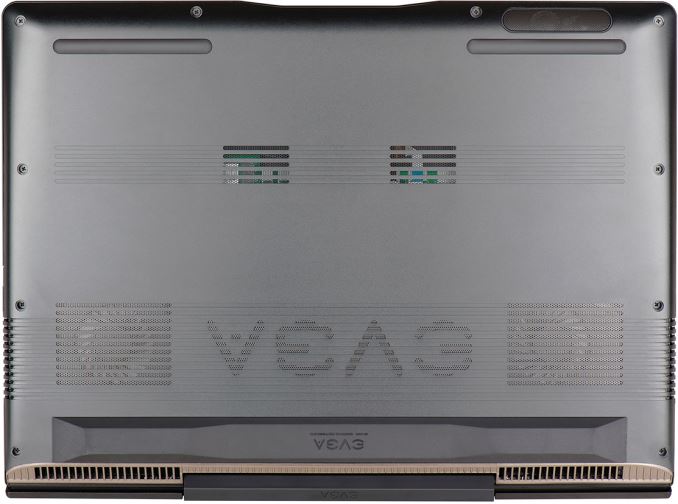
Another important aspect of the EVGA SC17 is its 17.3” display. The 4K (3840×2160) screen is based on an IPS panel by Sharp. It is unknown whether Sharp has applied its IGZO backplane technology to the panel to make it better when it comes to color accuracy, but this is generally possible.
EVGA’s SC17 should offer performance levels comparable to good gaming PCs featuring Intel’s Core i7 “Skylake” CPU as well as NVIDIA’s GeForce GTX 970 GPU. This should be enough not only for mainstream gaming, but also for VR gaming, something that may be interesting to many people these days. Despite of rather high performance, the SC17 is not too bulky or heavy: it is 1.05” (26.9 mm) thick and weighs 3.69 kilograms (8.14 pounds), which is low compared to many other 17” notebooks.
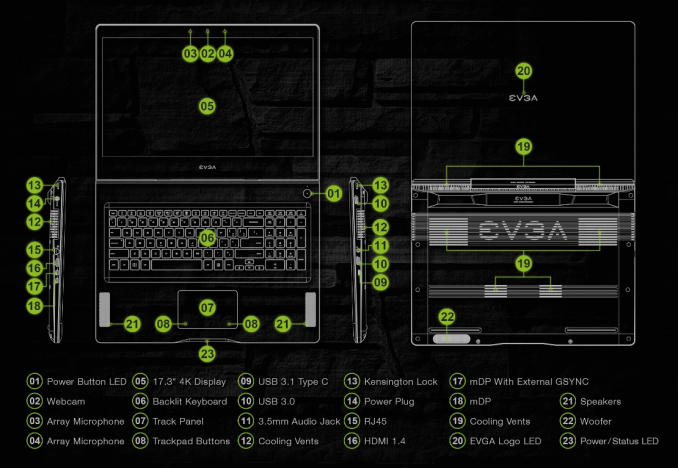
While EVGA this week officially introduced the laptop, it did not reveal when exactly it plans to start selling it, but expect the mobile PCs to arrive in the coming weeks. The price of the notebook in the default configuration is $2699.99, which is not very high given the unlocked Core i7 processor as well as the GeForce GTX 980M inside.
Gallery: EVGA Rolls Out SC17: High-End Gaming Laptop Designed for Overclocking





More...
Thread Information
Users Browsing this Thread
There are currently 37 users browsing this thread. (0 members and 37 guests)




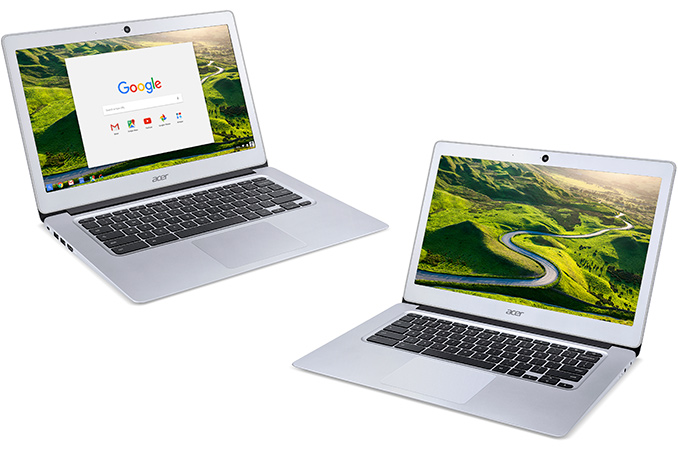
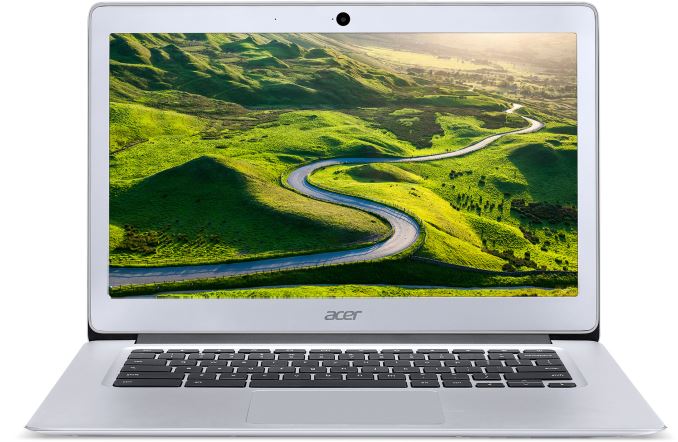

 Quote
Quote



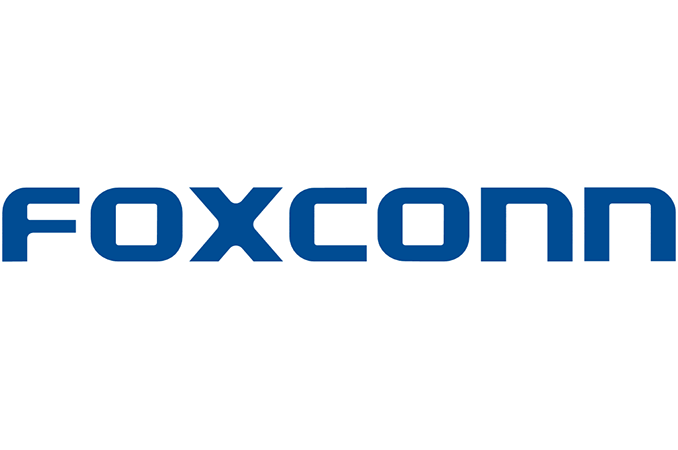

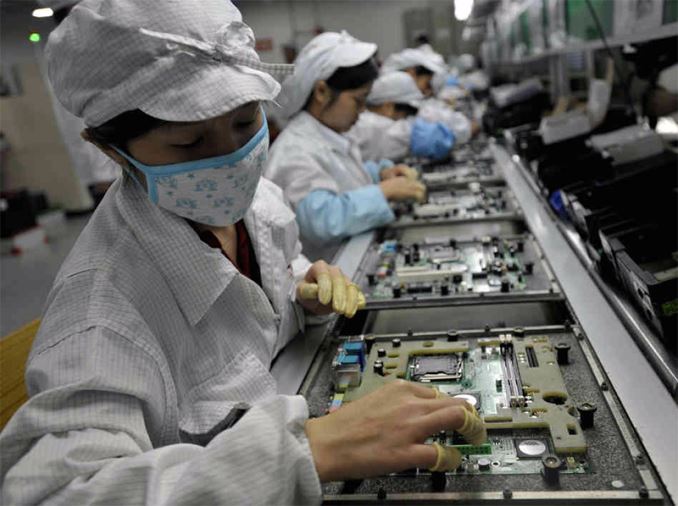



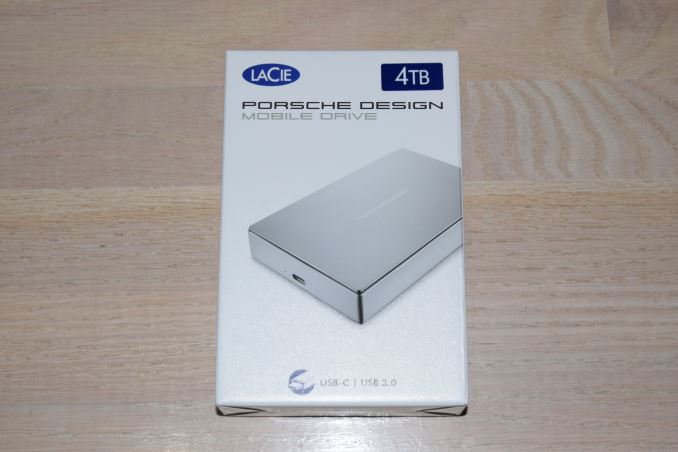
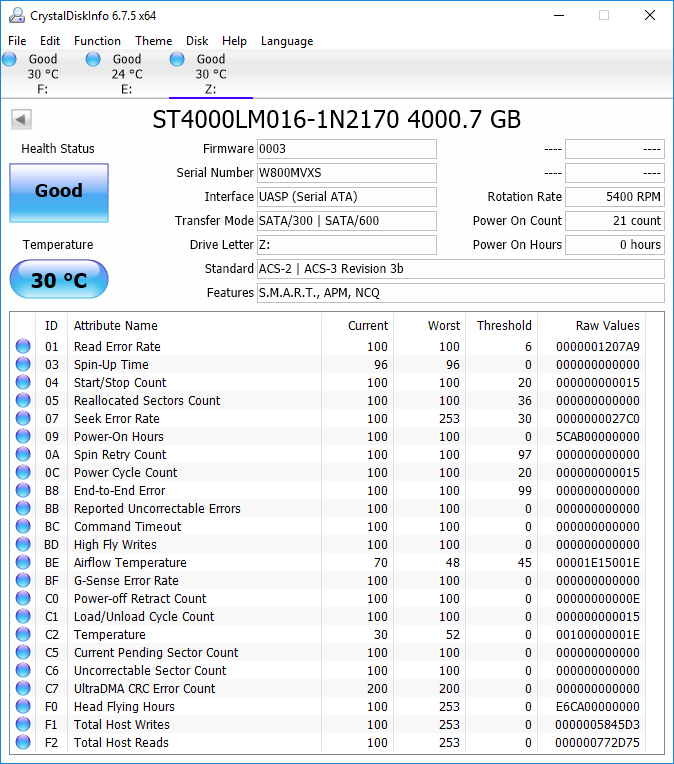

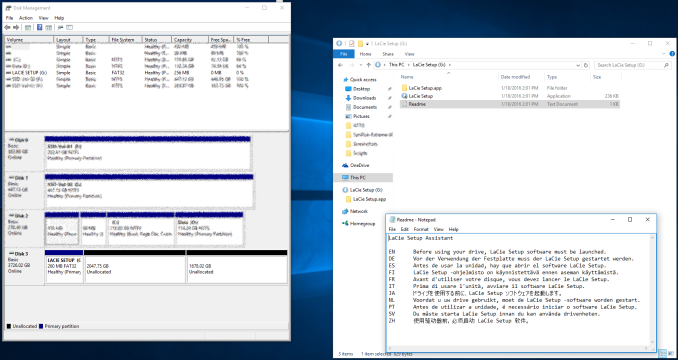
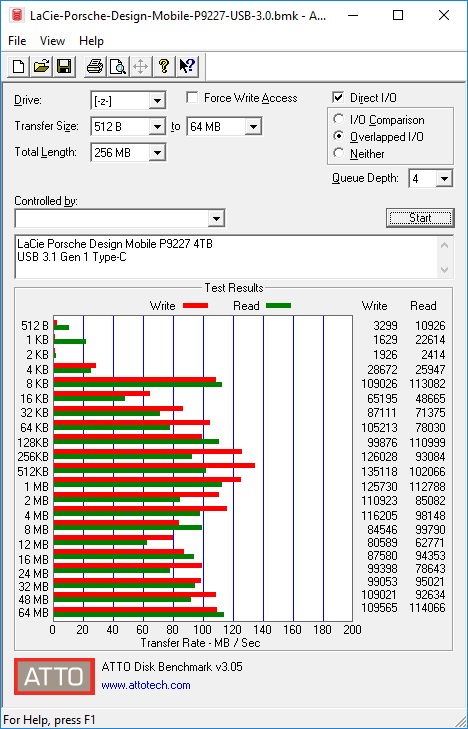
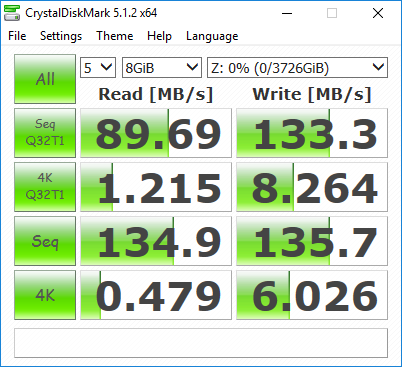
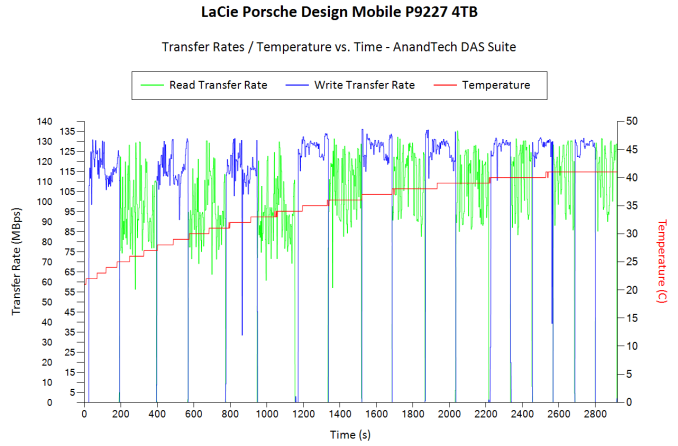
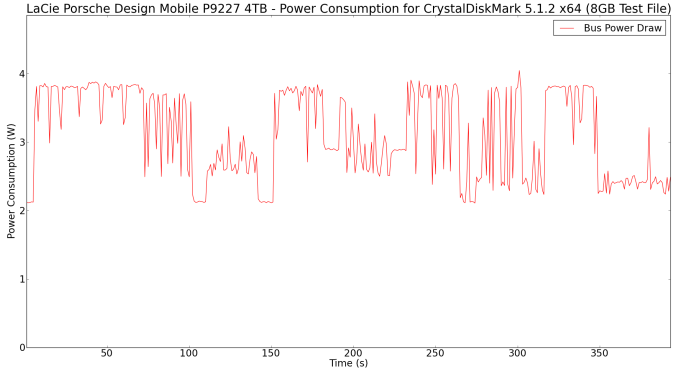
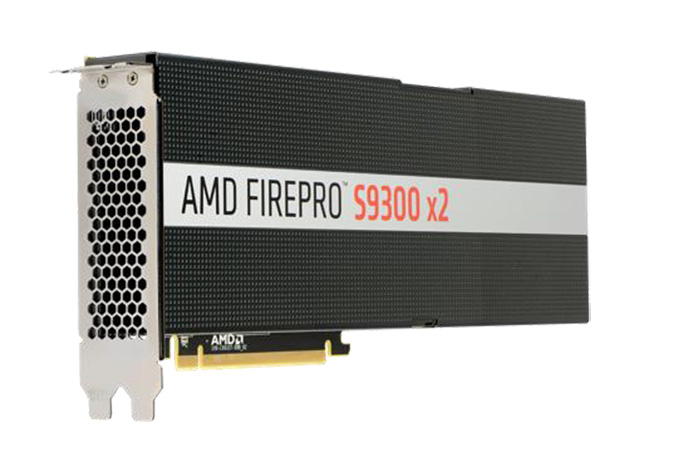

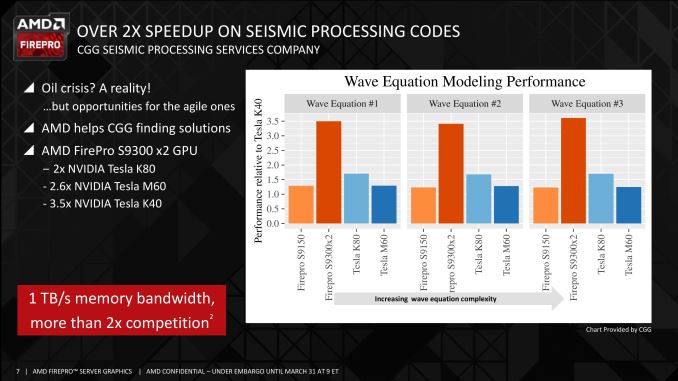
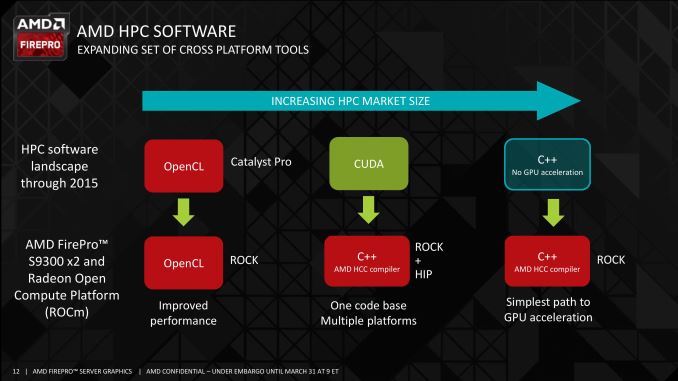



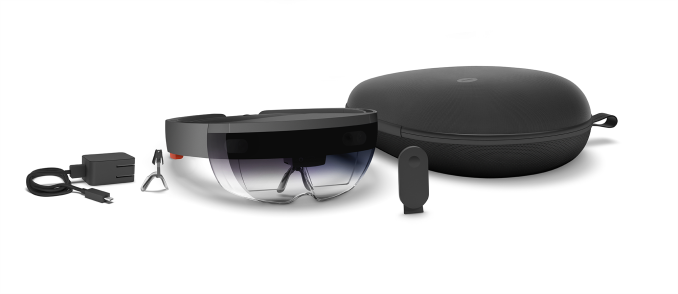
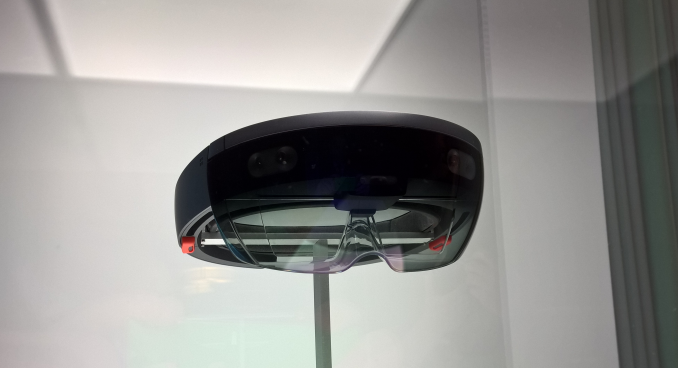
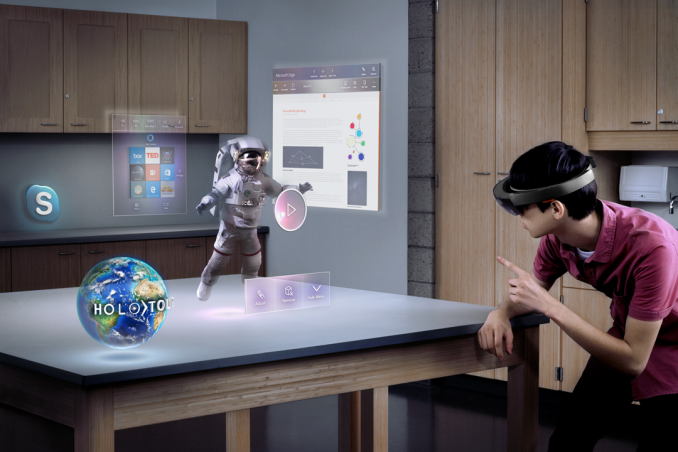

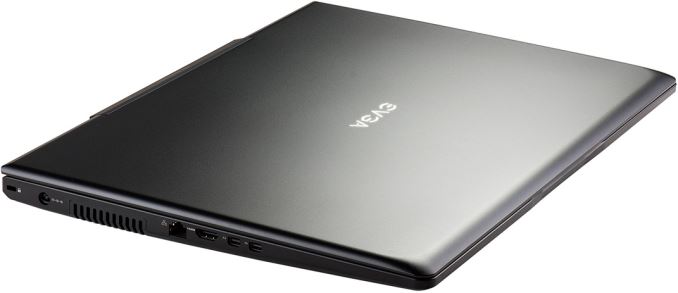
















Bookmarks